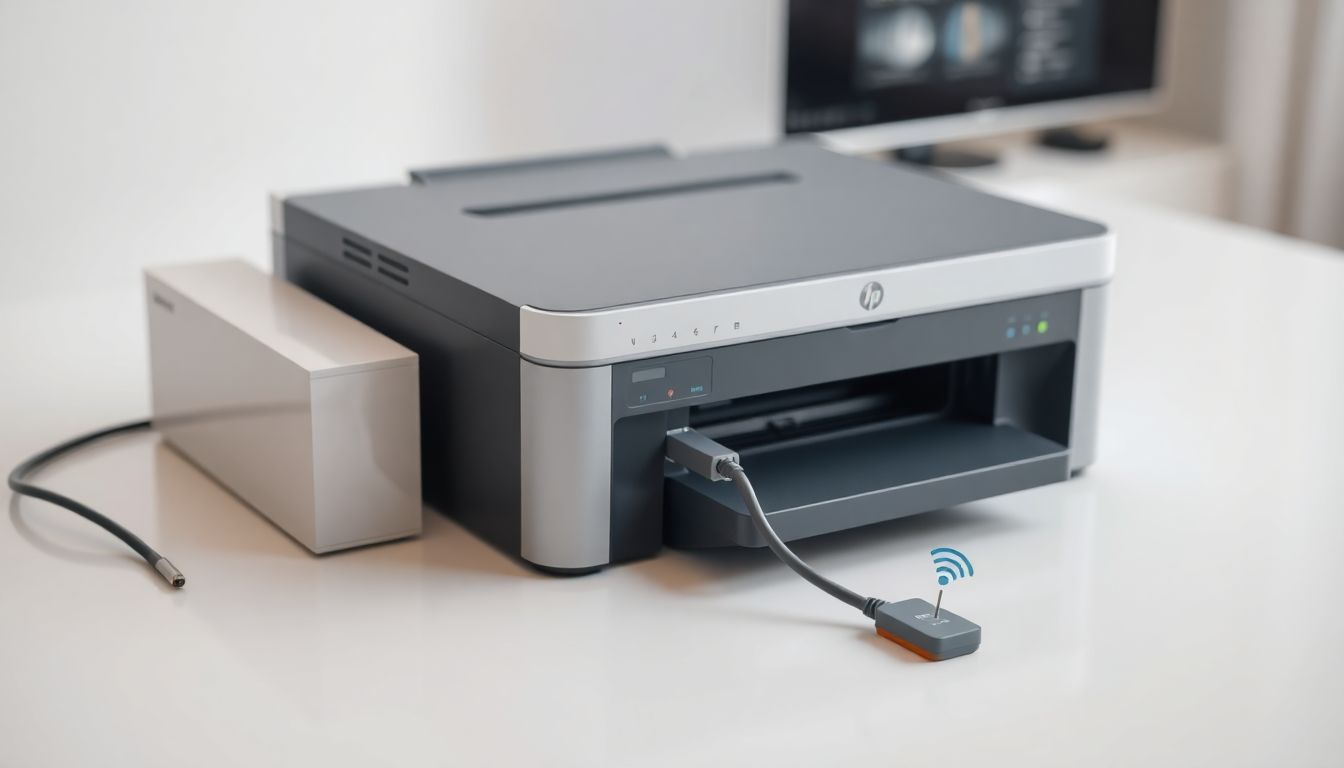Ever tried printing something important, only to find your printer stubbornly offline? It's a common frustration. Network printer issues can halt your workflow. We'll explore the most common reasons for these connection problems. Maintaining a reliable connection keeps everyone productive.
Understanding the Basics of Network Printing
Let's explore network printing and it's perks.
What is Network Printing?
Network printing allows multiple devices to share one printer. Instead of connecting directly via USB, it uses a network. This is super helpful for homes and offices. Everybody can print without needing to plug anything in.
Types of Network Connections for Printers
Wi-Fi and Ethernet are common. Wi-Fi offers wireless convenience, but can suffer from interference. Ethernet provides a stable wired connection. Other options exist but are less common. Each method has advantages and disadvantages. Wi-Fi is easy, Ethernet is dependable.
Diagnosing Common Network Printer Problems
Before diving deep, let's check the basics.
Is the Printer Online?
Start by checking the printer's screen. Look for error messages or an "offline" status. Some printers let you manually bring them online. If that's the case, give it a go.
Testing Network Connectivity
The "ping" command tests if your computer and printer talk. Find the printer's IP address, typically in its settings. Then, open the command prompt and ping the IP. If you get a reply, that's a good sign. A failed ping suggests a connection problem.
Troubleshooting Wi-Fi Connectivity Issues
Wi-Fi problems are frequent. Let's look at a few fixes.
Verifying Wi-Fi Credentials
Double-check the Wi-Fi password on your printer. Make sure it matches your network's password. Update it if needed through the printer's settings. Then, reconnect the printer to your Wi-Fi.
Addressing Wi-Fi Signal Strength
Weak Wi-Fi can cause printer issues. Try moving the printer closer to the router. Remove any obstacles blocking the signal. Walls and metal cause interference. Stronger signal, better printing.
Router and Network Configuration
Your router may block the printer. Check the router's firewall settings. Make sure the printer isn't on a blocked list. Enabling WPS simplifies connections. This creates a smoother setup.
Troubleshooting Ethernet Connectivity Issues
Ethernet offers stability, but issues still pop up.
Checking the Ethernet Cable and Ports
Visually inspect the Ethernet cable. Look for damage or loose connections. Ensure it's firmly plugged into the printer and router/switch. Test different ports to rule out a faulty one.
Addressing IP Address Conflicts
IP address conflicts disrupt network communication. Release and renew the printer's IP address in its settings. For reliable connections, consider a static IP address. Configure this within the printer's network settings.
Network Switch and Router Configuration
Confirm the network switch is working. Ensure the printer connects to an active port. Check router settings for blocks. DHCP should be enabled for automatic IP assignment.
Driver and Software Related Issues
Correct drivers and software are key.
Updating Printer Drivers
Download the latest printer drivers from the manufacturer's site. Use the correct drivers for your operating system (Windows, macOS). Outdated or incorrect drivers cause printing headaches.
Reinstalling Printer Software
Uninstall then reinstall the printer software. Use the manufacturer's software for printer management. It offers tools and features. This will help maintain printer health.
Advanced Troubleshooting Techniques
Sometimes, you must dig deeper.
Checking and Updating Printer Firmware
Check the printer's firmware version. Update it if an update is available. Follow manufacturer's directions closely during firmware updates. Incorrect updates risk printer damage.
Resetting the Printer to Factory Settings
A factory reset restores the printer to its default settings. Find the reset option in the printer's menu. Note that you will lose any custom settings. Use this as a last resort.
When to Seek Professional Help
If all else fails, seek a qualified technician's expertise. Complex network issues or hardware problems require professional intervention. Don't hesitate if you're stuck.
Conclusion
Troubleshooting printer network woes takes a methodical approach. Remember to check the basics, address Wi-Fi or Ethernet issues, and keep drivers updated. A stable printer network boosts productivity. Proactive maintenance prevents future problems.

